
The North Riding of Yorkshire was a subdivision of Yorkshire, England, alongside York, the East Riding and West Riding. The riding's highest point was at Mickle Fell at 2,585 ft (788 m).

Redcar and Cleveland is a unitary authority area with borough status in the ceremonial county of North Yorkshire, England. Its council has been a unitary authority since 1996.

Tees Valley is a combined authority area in North East England, around the lower River Tees. The area is not a geographical valley; the local term for the valley is Teesdale. The combined authority covers five council areas: Darlington, Hartlepool, Middlesbrough, Redcar and Cleveland and Stockton-on-Tees.
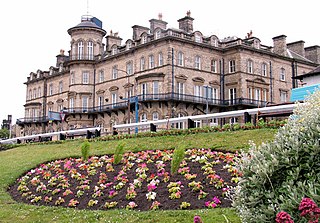
Saltburn-by-the-Sea, commonly referred to as Saltburn, is a seaside town in the civil parish of Saltburn, Marske and New Marske, in the Redcar and Cleveland district, in North Yorkshire, England, 12 miles (19 km) south-east of Hartlepool and 5 miles (8 km) south-east of Redcar. It lies within the historic boundaries of the North Riding of Yorkshire.
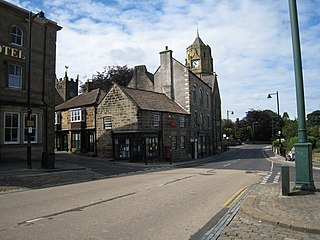
Loftus is a market town and civil parish in the Redcar and Cleveland borough of North Yorkshire, England. The town is located north of the North York Moors and sits between Whitby and Skelton-in-Cleveland. The parish includes the villages of Carlin How, Easington, Liverton, Liverton Mines and Skinningrove. It is near Brotton, Saltburn and Skelton-in-Cleveland.

Middlesbrough South and East Cleveland is a constituency created in 1997 represented in the House of Commons of the UK Parliament since 2024 by Luke Myer of the Labour Party.

Ormesby is a village and area split between the unitary authority areas of Middlesbrough and Redcar and Cleveland in North Yorkshire, England.
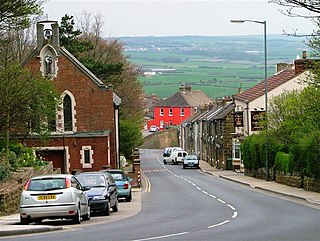
Brotton is a village in the civil parish of Skelton and Brotton, in the Redcar and Cleveland district, in the ceremonial county of North Yorkshire, England It is situated approximately 2.5 miles (4 km) south-east of Saltburn-by-the-Sea, 9 miles from Redcar, 12 miles (19 km) east of Middlesbrough and 14 miles (23 km) north-west of Whitby.

Saltburn, Marske and New Marske is a civil parish in the Redcar and Cleveland district, in the ceremonial county of North Yorkshire, England. As its name suggests, the parish includes Saltburn, Marske-by-the-Sea and New Marske. It borders the parishes of Skelton and Brotton, Guisborough and the unparished area of Redcar.

Langbaurgh was a liberty or wapentake of the North Riding of Yorkshire. It covered an area of the shire's north-eastern tip. The wapentake took its name from Langbaurgh hamlet, in present-day Great Ayton parish.

Skinningrove is a village in the civil parish of Loftus, in the Redcar and Cleveland district, in the ceremonial county of North Yorkshire, England. Its name is of Old Norse etymology and is thought to mean skinners' grove or pit.
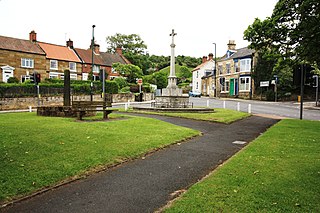
Skelton-in-Cleveland or Skelton is a market town in the civil parish of Skelton and Brotton at the foot of the Cleveland Hills and about 10 miles (16 km) east of Middlesbrough centre. It is in the borough of Redcar and Cleveland, North Yorkshire, England.

Coatham is an area of Redcar, in the borough of Redcar and Cleveland and the ceremonial county of North Yorkshire, England.

Grangetown is an area in the borough of Redcar and Cleveland, North Yorkshire, England. The area is 3 miles (4.8 km) east of Middlesbrough and 4 miles (6.4 km) south-west of Redcar.

Cleveland was a county constituency in the Langbaurgh Wapentake, North Riding of Yorkshire, England.

Langbaurgh was a parliamentary constituency in south Middlesbrough and Redcar and Cleveland boroughs, the latter previously named Langbaurgh from 1974 to 1996. It returned one Member of Parliament (MP) to the House of Commons of the Parliament of the United Kingdom, elected by the first past the post system, and existed from 1983 to 1997.

Greater Eston is part of the Borough of Redcar and Cleveland, North Yorkshire, England. The name is used by the borough council to describe the centres of Eston, Grangetown, Normanby, Ormesby, South Bank and Teesville.

The 2003 Redcar and Cleveland Borough Council election took place on 1 May 2003 to elect members of Redcar and Cleveland Unitary Council in England. The whole council was up for election with boundary changes since the last election in 1999. The Labour party lost overall control of the council to no overall control.

Redcar and Cleveland Borough Council is the local authority for Redcar and Cleveland, a local government district with borough status in the ceremonial county of North Yorkshire, England. Since 1996 the council has been a unitary authority, being a district council which also performs the functions of a county council. The council was created in 1974 as Langbaurgh Borough Council and was a lower-tier authority until 1996 when it was renamed and became a unitary authority, taking over county-level functions from the abolished Cleveland County Council.
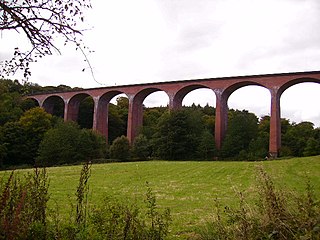
Saltburn Viaduct is a railway bridge in Redcar and Cleveland, North Yorkshire, England. The line was built as an extension of the Redcar and Saltburn Railway, and the viaduct is mostly built out of brick. The line opened to passengers in 1872, but became freight only in 1957, a purpose for which it still is in use for today as part of the Boulby line.





















